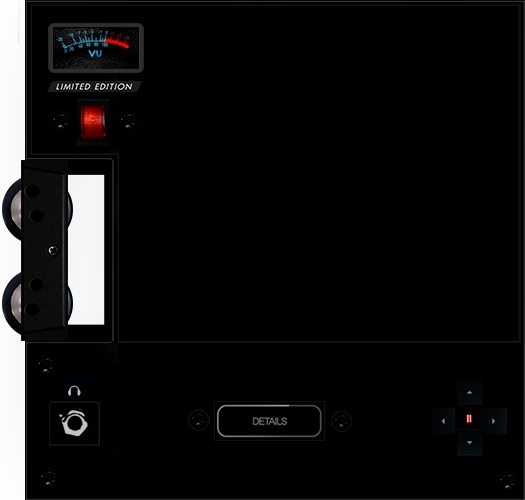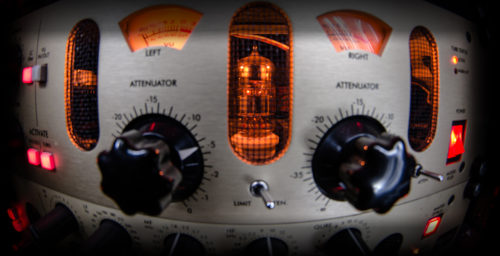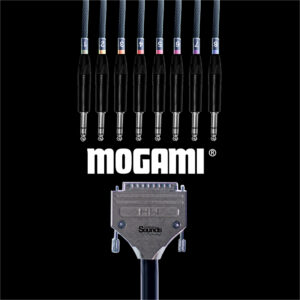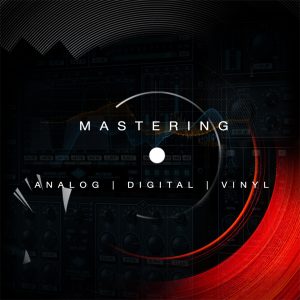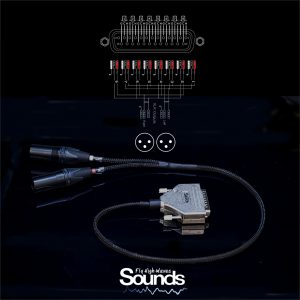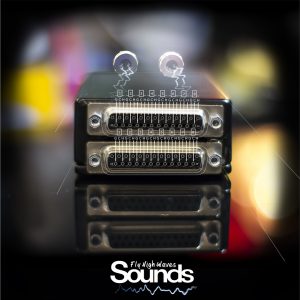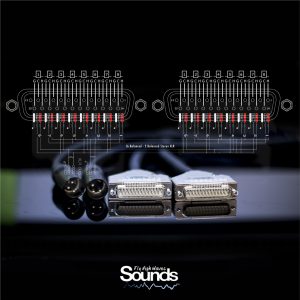
Number of tracks
Please take the wizard step by step and select the options.
- 30 $/ Track
- 40 $/ Track
- 60 $/ Track
- 50 $/ Track
- 40 $/ Track
- 50 $/ Track
- 60 $/ Track
- $/ Track
Subtle Noticeable Major- $
Dynamic Loud Maximum- $
- $
- $
- $
- $
- $
- $
- $
- $
- $
Assuming that you have different versions to match settings
- 10 $
- 10 $
- 10 $
- 10 $
- (max file size 1 GB) $
- (max file size 1 GB) $
- (max file size 1 GB) $
- (max file size 1 GB) $
Artist - Track Name (Version) | The details entered are used to prepare your project, to track your order and your files, to apply for codes if applicable. If your file names are descriptive enough you can skip to next step.- $
Artist - Track Name (Version) | The details entered are used to prepare your project, to track your order and your files, to apply for codes if applicable. If your file names are descriptive enough you can skip to next step.- $
Artist - Track Name (Version) | The details entered are used to prepare your project, to track your order and your files, to apply for codes if applicable. If your file names are descriptive enough you can skip to next step.- $
Artist - Track Name (Version) | The details entered are used to prepare your project, to track your order and your files, to apply for codes if applicable. If your file names are descriptive enough you can skip to next step.- $
- 5 $
- 5 $
- 15 $
- 20 $
- 25 $
- 10 $
- 10 $
-
10 $
Artist & Track Name (Version) | Used to rename file, Catalog info, Codes registration.
- $
Extra filenames to be renamed.
- $
Artist & Track Name (Version)
- $
Artist & Track Name (Version)
- $
Artist & Track Name (Version)
- $
Artist & Track Name (Version)
- $
Artist & Track Name (Version)
- $
Artist & Track Name (Version)
- $
Artist & Track Name (Version)
- $
Artist & Track Name (Version)
- $
Artist & Track Name (Version)
- $
Artist & Track Name (Version)
- $
- 10 $
Mastering can't be rushed most of the time. If you don't have urgent delivery time give us more time to prepare, evaluate and schedule the session. We will have more time to evaluate & critical listen. This means, even more, care for you. We can evaluate the masters on different systems, even to test it on big systems. Yo can skip if you don't know the release date. Enter the maximum delivery date. We will master your tracks sooner than that date.
- $
Please choose how you want the finalized project to be delivered.
- $
- $
- $
Project FAQ
This section is optional and is here to connect better with you track, to understand your project better. Please use your words… is about your track & project.
- $
1. How do you expect the track to sound after mastering?
2. What you think is the overall mood of the track?
3. What is the music genre of your production?
4. What is your main target audience?
5. Where you plan to release it?- $
- $
- $
- $
- (max file size 1 GB) $
- $
- $
- $
- $
- $
- $
- $
- $
- $
- $
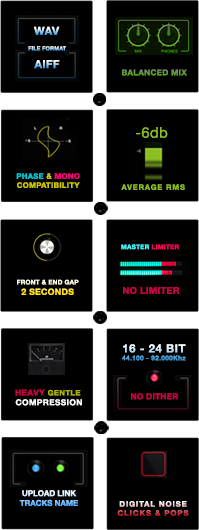 You are good to go.
You are good to go.Thank you for going so far. This mean that you are serious about your music.
Hit next to review all options.
If you didn't upload any files you will get the option to upload all the files based on your selections. In next screen, after pressing ORDER NOW you will be able to preview all selected options and upload your tracks and move to checkout.


Vinyl Mastering Session
Mastering is the last stage in the process of releasing the music out into the world. A hands-on quality control, the final polish, to ensure that it sounds the best that it can in all possible playback situations and making sure that it fits together seamlessly so the sound doesn’t vary from track to track. Mastering also deals with unwanted noise, clicks pops, device hum, artifacts, front and end fade-ins and outs, as well as preparing the music for distribution in different formats. More and more pros are embracing the high-resolution distribution and playback formats as well as devices that play uncompressed formats for better reproduction of music.
- Preview
- Mastering in Detail
- Make an Inquiry
- Mastering Examples
- My Mastered Tracks
- Private Folders
- X-Mastering
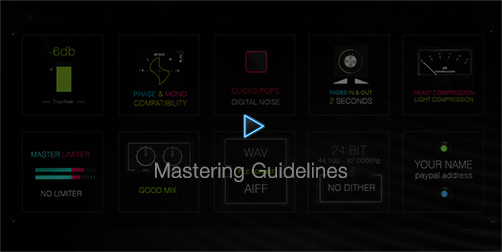
Complete info about mastering process
Mastering is the final stage of production sitting between mixing and manufacture or distribution online. Bringing specialist equipment and expertise a mastering engineer will ensure that your record not only performs in terms of tonal balance, stereo width, and depth of sound, loudness and also has the right creating a record that flows from track to track in an engaging way. A fresh pair of ears to your project that understands the technical demands of the end format, whether that’s an Audio CD, Vinyl or MP3 meant for download.
With technology constantly improving and becoming more affordable, more and more artists are finding that it is possible to record amazing sounding music from home studios. This saves a lot more time and money as opposed to going to a professional studio. There is some debate of whether or not sending music into a professional mastering. If the mix does not need modifications, it is at a perfect volume level, fades are well done, EQ is consistent throughout, compression is right on, etc…then there is no need for mastering. In reality are other aspects to consider. Even some of the best mixing engineers work get the advantages of mastering. A lot of artists spend loads of time and money on gear and recording, so why not go the extra mile to further improve the sound: especially with competitive rates that are offered from various mastering houses.
With affordable computer-based recording being so prevalent these days, a great deal of music is recorded and/or mixed in acoustically inaccurate monitoring environments. As a result of this, the role of the mastering studio is more important now than ever; as it often provides the only opportunity to accurately hear what’s going on in a recording and iron out any problems. Many producers now even get their demos mastered, in order to be sure that they will compete in the marketplace.
If your project is commercial in nature, you probably want your master to compare with others in your genre, and to have a contemporary, dense and upfront kind of sound. In other words, you want it to be LOUD. We can do this for you. With pleasure. On the other hand, your priorities might be more towards retaining every dynamic nuance, creating a finished master which is as open and natural sounding as possible. We would generally aim to find a balance between these approaches, but our priority at all times is to make sure that you get the sound you want.
Using the beautiful wizard that we created.
This varies from job to job, some clients provide a list of pointers and instruction on a track by track basis and some clients just allow the mastering engineer to do his work and do the best for the music with a completely fresh and unhindered approach. Of course, there are some jobs that have a combination of the 2 with some basic guides or sonic references for the engineer to work. Is the reason why we designed our mastering wizard interface with steps which will inform us about all the aspects of the process you want to be included. Other aspects will be added along the way based on the project. We can be in permanent contact for the best direction.
Contact us to discuss your project details and get your free mastering sample. As well we will take pleasure to discuss your music project and even to point you to learn more or to help you in your process.
Our studio setup combines the accuracy of digital and the character of analog processing to give your masters the benefit of both worlds. We call it hybrid mastering.
Here are the usual steps are addressed in the process:
Key benefits of the Mastering process. Our main aim.
The final step usually involves preparing the song or sequence of songs for download, manufacturing and/or duplication/replication. This step varies depending on the intended delivery format. In the case of a CD, it can mean converting to 16 bit/44.1 kHz audio through resampling and/or dithering and setting track indexes, track gaps, PQ codes, and other CD-specific markings. For web-centered distribution, you might need to adjust the levels to prepare for conversion to AAC, MP3 or hi-resolution files and include the required metadata. There is no doubt that adding mastering to your project will improve the quality of your music. Without it, your chance of making it in the highly competitive music industry decreases dramatically. For such a big responsibility and amount of expertise, hands-on work and time & affordable rate these days there is no argument: mastering is a necessity.
Mastering usually works with the final stereo mixdowns but can also take the form of stem mastering. This utilizes groups of instruments (i.e. drums, bass, guitars, vocals) to further enhance the result. Mastering is very different from mixing which is where the multi-tracks or sequenced elements of the music are individually equalized, compressed, effected, automated and leveled.
Stem mastering is a type of mastering that differs in that it uses ‘groups’ of instruments such as bass, guitars, drums, keyboards, vocals. There are a number of advantages to stem mastering. The ‘collections’ of instruments allow the mastering engineer to create a master with more targeted corrections and enhancement to the equalization, dynamics, depth and balance of the instruments in mixdown.
Stem mastering affords additional scope to target specific problems and further increase the subjective enhancements and apply an “expensive” sound to the production.
Mastering is normally capable of adding space, depth, punch, thickness, perceived volume increases, warmth, air (sparkle) and other global tonal changes, to a mix.
Consideration also has to be made for how the individual tracks work together when played one after another in an album/release sequence. Is there a consistent sound? Are the levels matched? Does the collection have a common “character” and playback evenly so that the listener doesn’t have to adjust the volume? Coherency throughout the track listing is achieved through the process of level matching, compression, and volume consistency. Taking on this process yourself, without the appropriate ear or experience, can often leave an album sounding flat. A professional will help make each track shine by itself, while also creating a tonally refined collection. EQ is leveled out to give the album its own consistent sound throughout as opposed to each song sounding like it was recorded and mixed at different times and places.
There are many alternatives these days to the handful of true high-end mastering studios which used to encompass the market. Whilst genuine mastering equipment is still very costly, there is now a range of more affordable options mainly in the form of computer plug-ins which has resulted in the explosion of mastering services operating today, mainly offering online mastering at sometimes very low prices, and all of them claiming to be “professional” and – that phrase again – “high-end”. The first benefit of professional mastering comes with experience. A professional has spent years defining tracks and pulling out the winning parts. A professional can also help you go that extra step, finding techniques and sounds that work with your ideal sound and manipulating your work to ensure the right tone is achieved. Finding an expert on the same page as you in this respect is invaluable. A professional mastering engineer will add value to your musical releases without leaving anything to chance.
The goal of this step is to correct mix balance issues and enhance particular sonic characteristics, taking a good mix (usually in the form of a stereo file) and putting the final touches on it. This can involve adjusting levels and general “sweetening” of the mix. Think of it as the difference between a good sounding mix and a professional-sounding, finished master.
Long, tiring mixdown sessions mean that details can be missed, it may be that you miss a click or a pop in a mix and this is best removed before it is heard by your listeners. Some mix down environments may not benefit from high resolution, large format loudspeakers in an acoustically treated room. This means that there can be a sonic inaccuracy that needs correction before release.
There’s also the hard truth that better equipment really does equal better results. You can hack your way through free trial software or an old mixing station, but today’s top of the range technology still produces the clearest, punchiest results. Unfortunately, it’s rare you’ll find this gear lying around so submitting your work to a professional with access to, and deep knowledge of, the latest technologies will give your tracks the best possible starting position.
Your mastering engineer may also use compression over the track, and there are many types and approaches to dynamic processing so that it can be used to add punch and fatness or to hold a lead element in place on the top of the mix, or simply to add that bit of “glue” that holds a mix together.
When done correctly, the dynamics and impact will remain largely intact while your tracks become comparable in perceived level compared to most commercially released songs.
When done poorly, your tracks can end up sounding overly loud, harsh and draining, or even small and crunchy, with little to no dynamics present. flattening effect on your music, as the gentle parts of your songs sound as if they’re at the same volume and intensity level as the energetic sections, sucking the life out of what should be the most impactful moments in your tracks.
Be sure to select the loudness vs. dynamics balance with your mastering engineer or select the range during the wizard steps the top of your session.


Complete info about mastering process
Mastering requires critical listening process... however, software tools exist to facilitate the process. Results still depend upon the intent of the engineer, the accuracy of the speaker monitors, and the listening environment. Mastering engineers may also need to apply corrective equalization and dynamic compression in order to optimize sound translation on all playback systems. It is standard practice to make a copy of a master recording, known as a safety copy, in case the master is lost, damaged or stolen. - Wikipedia General Definition
Mastering is a form of audio post-production, is the process of preparing and transferring recorded audio from a source containing the final mix to a data storage device (the master); the source from which all copies will be produced (via methods such as pressing, duplication or replication). In recent years digital masters have become usual although analog masters, such as audio tapes, are still being used by the manufacturing industry, notably by a few engineers who have chosen to specialize in analog mastering.
Mastering is the final stage of production sitting between mixing and manufacture or distribution online. Bringing specialist equipment and expertise a mastering engineer will ensure that your record not only performs in terms of tonal balance, stereo width, and depth of sound, loudness and also has the right creating a record that flows from track to track in an engaging way. A fresh pair of ears to your project that understands the technical demands of the end format, whether that's an Audio CD, Vinyl or MP3 meant for download.
With technology constantly improving and becoming more affordable, more and more artists are finding that it is possible to record amazing sounding music from home studios. This saves a lot more time and money as opposed to going to a professional studio. There is some debate of whether or not sending music into a professional mastering. If the mix does not need modifications, it is at a perfect volume level, fades are well done, EQ is consistent throughout, compression is right on, etc...then there is no need for mastering. In reality are other aspects to consider. Even some of the best mixing engineers work get the advantages of mastering. A lot of artists spend loads of time and money on gear and recording, so why not go the extra mile to further improve the sound: especially with competitive rates that are offered from various mastering houses.
With affordable computer-based recording being so prevalent these days, a great deal of music is recorded and/or mixed in acoustically inaccurate monitoring environments. As a result of this, the role of the mastering studio is more important now than ever; as it often provides the only opportunity to accurately hear what’s going on in a recording and iron out any problems. Many producers now even get their demos mastered, in order to be sure that they will compete in the marketplace. If your project is commercial in nature, you probably want your master to compare with others in your genre, and to have a contemporary, dense and upfront kind of sound. In other words, you want it to be LOUD. We can do this for you. With pleasure. On the other hand, your priorities might be more towards retaining every dynamic nuance, creating a finished master which is as open and natural sounding as possible. We would generally aim to find a balance between these approaches, but our priority at all times is to make sure that you get the sound you want.
Mastering engineers also offer a set of fresh ears with renewed perspective to a project which the musicians and producer may be overly intimate with. This can clarify and resolve sonic issues in a subjectively useful way. The mastering engineer will be an expert in working with stereo 2 track material and have a skill set and hearing acuity which brings great value to a project. Processing stereo 2 track mix downs require a very different approach than a mixing situation. An experienced mastering engineer will be fully aware of the advantages and disadvantages of any applied processing across a stereo mix and will seek to maximize subjective improvement whilst minimizing any side effects. Good judgment is the core of the mastering engineers job. This is closely related to high end, high-resolution monitors, amplifiers, and acoustics which create the fertile ground for good decision making.
It’s also extremely important to involve an unbiased “outsider” to provide the finishing touches. Mastering engineers are detached from all the attachments acquired over the course of the production process. Doesn't matter how expensive was the process or how long. The mastering engineer simply wants the mixes to sound at its best, based competition and what the public expects to hear. Today the majority of music intended for release goes through some form of the mastering process and with more independent artists also discovering the benefits, getting demos mastered is becoming widespread too.
If you've ever wondered why commercial recordings sound louder, fuller or punchier than your own it could be because they've had the benefit of professional mastering. If you want to make sure that it sounds professional and polished, the music mastering services are an absolute must for you. You’ve recorded each and every element of every song and spent countless hours/days/weeks/months mixing each song as perfectly as you (or your mix engineer(s)) know how. But when you compare them to your competition, your mixes just don’t have that “finished” sound. This is exactly what audio mastering brings to the table. (that's why is called black art.)
Mastering has always been considered by many in the music industry as something of a dark art. Unlike mixing, which is fairly well understood, the process of transforming raw mixes into professional, broadcast standard, radio-friendly tracks, has an air of mystery to it. Part of the reason for this is that the tools at the mastering engineer’s disposal are in essence the same as those used in the recording and mixing process. Equalization and compression – and yet what the experienced mastering engineer can bring to a project with those tools often go beyond the expectations of his client. This is why the mastering engineer’s contribution is often described in such ambiguous terms as “that special touch”, “bringing the tracks to life” or “making it sound like a record”. The difference between a mastered and an unmastered track can be dramatic, or it can be subtle. It’s impossible to generalize about what mastering does because every recording has its own unique features; some positive which mastering would seek to enhance, and some negative which mastering would seek to remedy. In terms of EQ, there are broad issues of the general tonal content i.e. whether a track needs more or less bass or treble. But there can be more specific areas where certain frequencies dominate or are lacking, possibly due to acoustic anomalies like room modes from the recording environment.
The final procedure where your stereo music mixes are committed to their final release medium, this could be a CD-R pre-master ready for duplication, a DDP (Disk Description Protocol) or correctly encoded audio files. In any event, it is the mastering engineers job to ensure that the music is equalized and processed in a way that ensures it will translate across the widest range of reproduction sound systems. Raise or lower the overall level of the tracks and makes each track on the album uniform in volume level. This doesn’t mean that you simply make one preset and use it on all your tracks so that they have a consistent sound. Instead, the goal is to reconcile the differences between tracks while maintaining (or even enhancing) the character of each of them, which will most likely mean different settings for different tracks. This allows for listening to an entire album through a stereo at one volume level instead of having to adjust the level of each track. The mastering engineer can equalize, compress and adjust other parameters of the mix to aid translation across all the varying types of audio system the music will be played on. This means that will the music will deliver the same vibe in a car, home stereo, headphones, or earbuds.
In addition, the engineer can work with the fades, spacing, automation, leveling of tracks and increasing perceived volume if required. Finally, the music should not suffer from defects such as pops, clicks, bad edits or other sonic glitches. The medium for duplication or distribution should also be error-free and quality control should be applied to ensure the client receives the best product possible.
Mastering also takes a considerable amount of time. Done right, every layer of every tone must be considered, manipulated, tuned, and polished off. It’s a process of learning where each track is coming from, and where it should end up, in the case of an album or a vinyl. Mastering takes hours of concentration and technical know-how. What’s more, learning how to master in the first place is a meticulous and time-consuming process.
It’s likely you already have a sound understanding of the technical musical elements that make up your track. Sadly, that’s rarely enough to master a track to today’s high standards. The process is extremely technical and requires inside-out knowledge of sonic manipulation, in-depth software, and complex processes. Professional mastering will see your tracks in the hands of experts who live and breathe these procedures, meaning they will stand out amongst others.
Mastering is a final procedure and normally works with stereo interleaved final mixdown files, (unless you are choosing stem mastering which uses instrumental groups) this means that all processes are stereo ganged. This means that there are some mix issues which are not possible to resolve during mastering because of the inherent limitation of the stereo 2 track nature of the work. For example, if you have mixed your bass too low in the mix it will be difficult for a mastering engineer to raise the level of the bass without raising other central elements in the mix. (i.e. snare /kick drum, vocals). These issues relate to mixing down and it is here where they are best resolved. Some mastering engineers will offer basic mix advice if you require it as long as you are serious about proceeding with the work, this is an added bonus of online mastering as it can be addressed prior to the time of mastering if the mixes are sent in for an appraisal before mastering commences.
On the internet forums, you can occasionally find people who want to offer to master for free but this is not professional mastering. Professional mastering engineers spend years on the acquisition of skills and reference grade equipment. There is no shortcut to this and as such you need to be wary of certain abuses of the mastering profession online. If you want quality results “free mastering” and websites that are purely graphics and text-based should generally be avoided. Sites that do not show the room, the speakers, the equipment, a clients list, engineering background are rife and you have to ask yourself why such important details are missing. This is all common sense really. A professional will be able to bring something new to your project and with serious reference equipment will be able to listen deep into your mixdowns and make confident and positive correction where need be.
A beginner, student or someone who is ill-equipped can easily process your music in a detrimental manner and mastering is not the time or place for experiments, learning on the job or beginners.
A professional mastering engineer will add value to your musical releases without leaving anything to chance.
Mastering operates in 2 main ways, attended sessions and online mastering. The former means you need to attend the studio and sit with the engineer and listen in and make comments as you feel is required for your music. Some people like this way of working but it is more expensive and can be a little daunting listening to your music on a large and unfamiliar reproduction system. Online mastering is a much more cost-effective and you still remain in complete control of your musical project as the mastering engineer will send mastering preview files so you can hear the music for yourself in a familiar environment. For online mastering, I suggest making the judgment on a site based on seeing credible information and actual pictures of the equipment that resides within the studio. This way you can easily rule out bedroom operators and the inexperienced posing as mastering engineers. Apply your judgment, check all the information on the site and ask yourself if you feel as if there is sufficient information to be able to trust the engineer's experience, tools, and previous work history.
Many online mastering studios offer a free mastering sample, this can be a great way of hearing the quality of work, ruling out the charlatans. You can also try calling the mastering engineer and getting a first impression, ask about equipment choices, how to proceed and get a feel for the competence of the engineer.
We offer a personal opinion related to this question. We found that a combination of both analog and digital processing produces the best results in mastering. There are some techniques that analog processing can perform better than digital processing and vice versa. A mastering studio is not complete unless it has a combination of the 2 which seem to compliment each other very nicely. Ultimate results can only be realized by the use of both technologies in the vast majority of cases. However, it can also be the case that occasional jobs benefit from the use of one or the other and this decision is reliant on the experience of the mastering engineer and the sonic goals at hand.
Using the beautiful wizard that we created. This varies from job to job, some clients provide a list of pointers and instruction on a track by track basis and some clients just allow the mastering engineer to do his work and do the best for the music with a completely fresh and unhindered approach. Of course, there are some jobs that have a combination of the 2 with some basic guides or sonic references for the engineer to work. Is the reason why we designed our mastering wizard interface with steps which will inform us about all the aspects of the process you want to be included. Other aspects will be added along the way based on the project. We can be in permanent contact for the best direction.
Contact us to discuss your project details and get your free mastering sample. As well we will take pleasure to discuss your music project and even to point you to learn more or to help you in your process.
Our studio setup combines the accuracy of digital and the character of analog processing to give your masters the benefit of both worlds. We call it hybrid mastering.
Here are the usual steps are addressed in the process:
Key benefits of the Mastering process. Our main aim.
The final step usually involves preparing the song or sequence of songs for download, manufacturing and/or duplication/replication. This step varies depending on the intended delivery format. In the case of a CD, it can mean converting to 16 bit/44.1 kHz audio through resampling and/or dithering and setting track indexes, track gaps, PQ codes, and other CD-specific markings. For web-centered distribution, you might need to adjust the levels to prepare for conversion to AAC, MP3 or hi-resolution files and include the required metadata. There is no doubt that adding mastering to your project will improve the quality of your music. Without it, your chance of making it in the highly competitive music industry decreases dramatically. For such a big responsibility and amount of expertise, hands-on work and time & affordable rate these days there is no argument: mastering is a necessity.
Mastering usually works with the final stereo mixdowns but can also take the form of stem mastering. This utilizes groups of instruments (i.e. drums, bass, guitars, vocals) to further enhance the result. Mastering is very different from mixing which is where the multi-tracks or sequenced elements of the music are individually equalized, compressed, effected, automated and leveled.
Stem mastering is a type of mastering that differs in that it uses ‘groups’ of instruments such as bass, guitars, drums, keyboards, vocals. There are a number of advantages to stem mastering. The ‘collections’ of instruments allow the mastering engineer to create a master with more targeted corrections and enhancement to the equalization, dynamics, depth and balance of the instruments in mixdown.
Stem mastering affords additional scope to target specific problems and further increase the subjective enhancements and apply an “expensive” sound to the production.
Mastering is normally capable of adding space, depth, punch, thickness, perceived volume increases, warmth, air (sparkle) and other global tonal changes, to a mix.
Consideration also has to be made for how the individual tracks work together when played one after another in an album/release sequence. Is there a consistent sound? Are the levels matched? Does the collection have a common “character” and playback evenly so that the listener doesn’t have to adjust the volume? Coherency throughout the track listing is achieved through the process of level matching, compression, and volume consistency. Taking on this process yourself, without the appropriate ear or experience, can often leave an album sounding flat. A professional will help make each track shine by itself, while also creating a tonally refined collection. EQ is leveled out to give the album its own consistent sound throughout as opposed to each song sounding like it was recorded and mixed at different times and places.
There are many alternatives these days to the handful of true high-end mastering studios which used to encompass the market. Whilst genuine mastering equipment is still very costly, there is now a range of more affordable options mainly in the form of computer plug-ins which has resulted in the explosion of mastering services operating today, mainly offering online mastering at sometimes very low prices, and all of them claiming to be “professional” and – that phrase again – “high-end”. The first benefit of professional mastering comes with experience. A professional has spent years defining tracks and pulling out the winning parts. A professional can also help you go that extra step, finding techniques and sounds that work with your ideal sound and manipulating your work to ensure the right tone is achieved. Finding an expert on the same page as you in this respect is invaluable. A professional mastering engineer will add value to your musical releases without leaving anything to chance.
The goal of this step is to correct mix balance issues and enhance particular sonic characteristics, taking a good mix (usually in the form of a stereo file) and putting the final touches on it. This can involve adjusting levels and general “sweetening” of the mix. Think of it as the difference between a good sounding mix and a professional-sounding, finished master.
Long, tiring mixdown sessions mean that details can be missed, it may be that you miss a click or a pop in a mix and this is best removed before it is heard by your listeners. Some mix down environments may not benefit from high resolution, large format loudspeakers in an acoustically treated room. This means that there can be a sonic inaccuracy that needs correction before release.
There’s also the hard truth that better equipment really does equal better results. You can hack your way through free trial software or an old mixing station, but today’s top of the range technology still produces the clearest, punchiest results. Unfortunately, it’s rare you’ll find this gear lying around so submitting your work to a professional with access to, and deep knowledge of, the latest technologies will give your tracks the best possible starting position.
Your mastering engineer may also use compression over the track, and there are many types and approaches to dynamic processing so that it can be used to add punch and fatness or to hold a lead element in place on the top of the mix, or simply to add that bit of “glue” that holds a mix together.
When done correctly, the dynamics and impact will remain largely intact while your tracks become comparable in perceived level compared to most commercially released songs. When done poorly, your tracks can end up sounding overly loud, harsh and draining, or even small and crunchy, with little to no dynamics present. flattening effect on your music, as the gentle parts of your songs sound as if they’re at the same volume and intensity level as the energetic sections, sucking the life out of what should be the most impactful moments in your tracks. Be sure to select the loudness vs. dynamics balance with your mastering engineer or select the range during the wizard steps the top of your session.
Our mastering process is human based and through a beautiful wizard, we will guide you through all the options available. Even in attended mastering sessions is difficult to say what you want and what you don't want without sounding demanding and to be understood. Not everybody has the language to understand all the terms and the processes involved, what options you have and what you missed out that nobody told you about, ...what are the cost and extra fees. Many artists and producers have told us of previous experiences where they have invested time and money into a mastering session only to find that the results did not live up to their expectations. We at Fly High Waves Sounds recognize that there is any number of ways to master a recording and it’s important for us to establish what you are looking for in your music.
The result will be returned online, in your dedicated folder, by e-mail or via mail service in case of an archive disk or vinyl lacquer etc. In the same time, you can find your masters or delete them after the download. You can keep them as a backup and you will find them there later and in some cases, we can use the masters as a reference for your further mastering projects.

Submission Guidelines explained:
How do I prepare for mastering?
When you bounce or export your mix downs out for mastering please bounce at 24-bit resolution and at the existing sample rate of your DAW session. The files should be stereo .wav or .aif files. You can also bounce to 32 bit but there is no sonic advantage over 24 bit for the purposes of mastering. Just orchestral music may benefit.
Before you bounce your mixes ensure you bypass any limiter plugin on your software master bus. After doing so ensure you check for any clipping (signal peaks that exceed zero). If you do see clipping, rather than adjust your mix gain structure please simply pull down the master fader by the amount that is needed to resolve any occurrences of clipping. You can then export the files at 24-bit resolution.
Files should be named with the track and artist name and a date which is useful for all to know. Files should be zipped up using Winrar, Winzip and uploaded using a suitable online file transfer website or directly to our wizard or user folder. It is also a good plan to prepare a .rtf text document with the track running order, track name, artist name(s) and any subcode information that will be inserted into the final medium such as ISRC codes. This should be sent to the mastering engineer with the audio files.
When you prepare for stem mastering you need to ensure that all the groups (or stems) are of exactly the same length. In your digital audio workstation, you set locators at the beginning and end of the tracks (ideally with a 2-second pre and post-roll at each end of the bounce/export to avoid cutting off reverb tails, etc.) The engineer will require 24-bit files and they should be stereo interleaved files. This way when the mastering engineer receives the files they can be imported and lined up on multiple tracks so they will all play perfectly in synchronization.
Ideally, when you have exported your stems you would import them into your own sequencer and check that they sound the same as your mixdown. If so they are ready to send to the mastering engineer. Some people may have been mixing into a limiter which causes a complication because stems need to be unlimited when they are exported (preserving the punch and dynamics of the tracks). The originally summed mix down will have been affected globally by the limiter on the stereo master output. If you were to export the stems through a limiter via the stereo output (as is often the case) each stem will be limited in a different way because the stems are exported in isolation.
In this case, we recommend exporting the stems without the limiter and also provide a stereo limited mix down so it is possible to gauge how much limiting was applied to the overall mix, this gives some insight to what was being heard during mixdown and can help identify any specific problems you may have been having. Mixing into a limiter is not at all ideal but it provides another layer of information during mastering if a stereo limited mix is provided along with the stems at the time of stem mastering.
Most musicians and bands are aware of the benefits of professional audio mastering, the final stage where a mastering engineer with considerable experience will enhance, quality control and optimize a piece of music before it’s release. Mastering is usually performed using a 24-bit stereo interleaved file, the result of the producers/engineers final mix down.
Mastering engineers have various professional engineering backgrounds and it is comforting to know that your engineer has had plenty of mixing experience when considering whether to try stem mastering for your music projects.
What Sets our Mastering house Apart Our engineers have a lot of experience behind the console. One main engineer is specialized in electronic music and has the experience of playing in the underground scene on vinyl and digital, releasing music and also running an electronic music label. The second one has worked as professional musicians, mix and post-production engineers for the top labels in the recording industry. Our blend of music business experience and perspectives gives us a unique insight to lean on during every project. Mastering music is what we do every day. Our mission is simple: to give you the best quality mastering service there is. After all, we’d like you to come back.



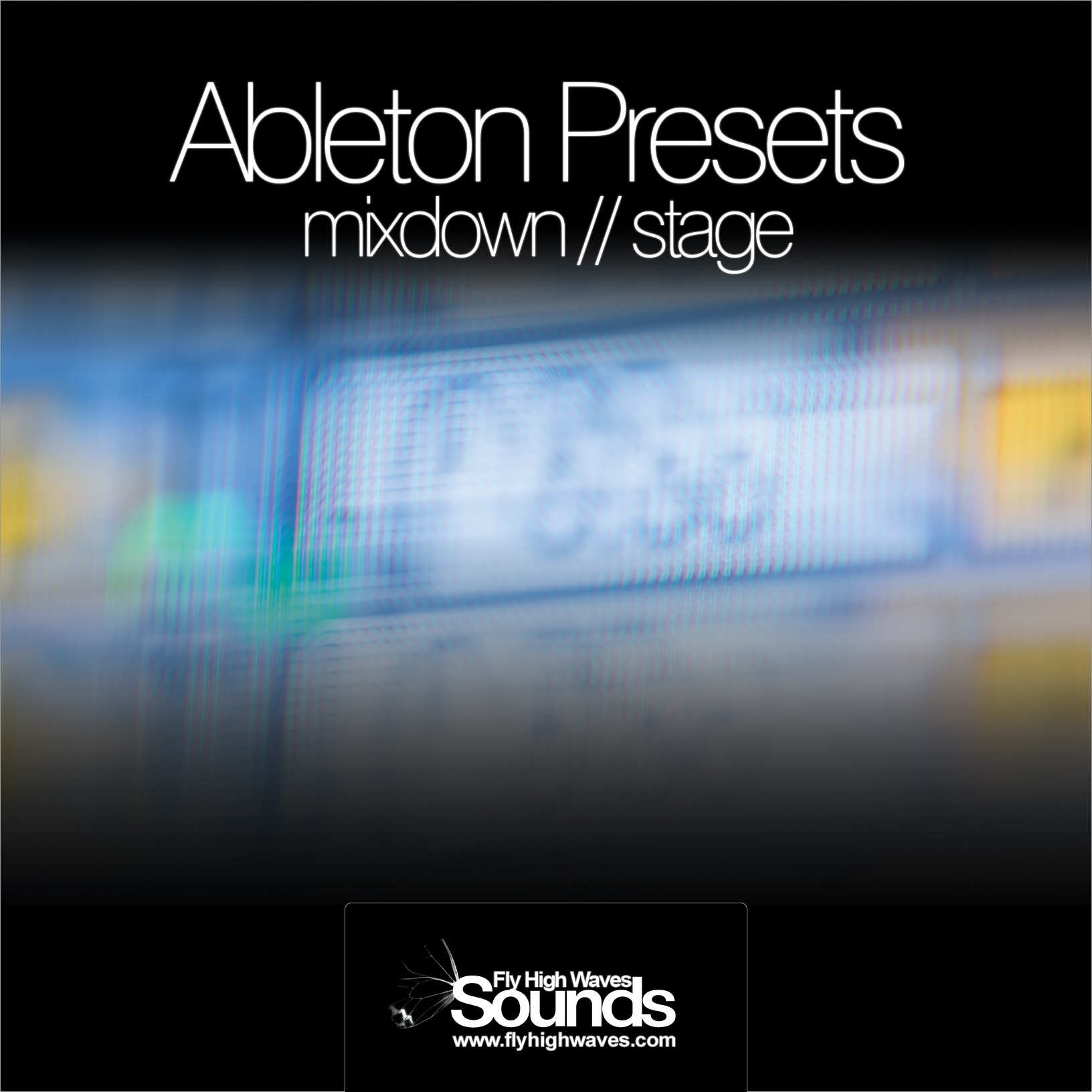
Similar Resources
-


Sonic Vitalizing Service
Tube Sound? Using specialized tools, we get sound details back to life. The audio signal is given an improved depth and perspective, more weight in the basses, clear and better-differentiated mids and silky, brilliant highs, enhancing the spatial impression. Tube Sound Vitalizing service is designed for the sound enthusiasts in professional recording, mastering, and cutting. The finest audio technologies like Vacuum Tube technology, RC & LC-technology, transistor, semiconductor technology allow us the unique combination of dynamic equalizers, amplitude-controlled phase correction, harmonic filtering opens up a whole new listening dimension by adapting the sound pattern to the nonlinearities of the human ear. Accurate Mid frequencies, transparency with a soft, unobtrusive sound. The treble range is reworked with broadband shelving filters, which focus on achieving a smooth, silky sound pattern. High frequencies are livened up without making them sound hard or aggressive. Audio sweetening with great tonal flexibility and musicality. The result is a pleasanter and livelier sound pattern with a beautiful wealth of detail.
-


Sound Restoration Service
Audio restoration is a generalized term for the process of removing imperfections such as hiss, impulse noise, crackle, clicks, wow and flutter, background noise, and mains hum from sound recordings. It can be performed directly on the recording medium, or on a digital representation of the recording using specialized software tools. With any project, we consider the condition of the physical media, the anticipated audience, and the cultural moment of the original recording.
Philosophy: We apply processing if the defect is a distraction for the listener. In general, it's better that it sounds natural, so it's better to have an original defect than a new defect.
